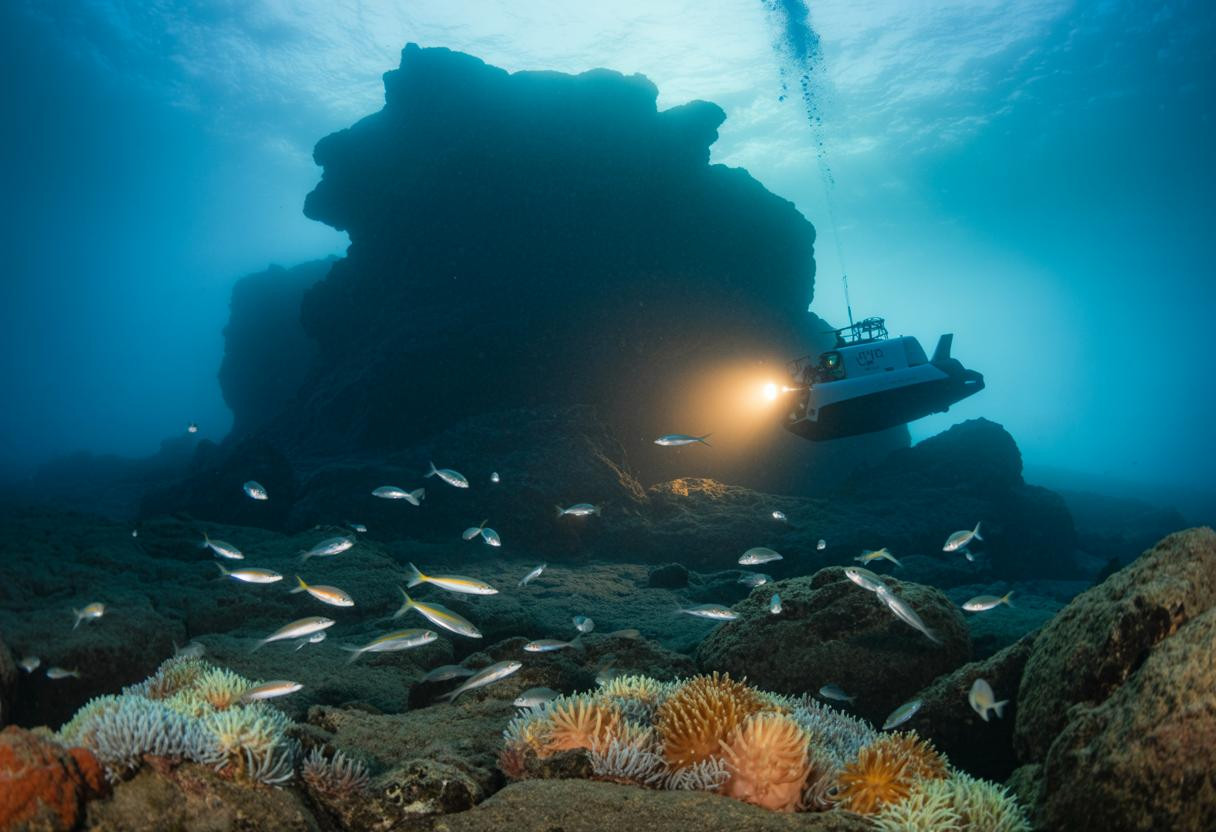Beneath the ocean’s surface, a sleeping giant is waking. Scientists have made a groundbreaking discovery, mapping a previously unknown submarine volcano in unprecedented detail. This remarkable find is expanding our understanding of seabed geology and revealing secrets of the underwater world that have remained hidden until now.
A hidden colossus beneath the waves
Located approximately 300 miles off the Oregon coast, the newly mapped volcano rises dramatically from the ocean floor. Dr. Eleanor Wright, lead geologist on the expedition, describes the moment of discovery: “It was like finding a mountain range on the moon. We knew something was there from satellite data, but the detailed structure took our breath away.”
The volcano sits along the Juan de Fuca Ridge, joining other underwater formations like the extensively studied Axial Seamount, but with distinctive features never before documented in the region.
Revolutionary mapping technology reveals hidden details
This discovery was made possible through advanced bathymetric technology, including multibeam sonar mounted on Autonomous Underwater Vehicles (AUVs). These technological marvels function like underwater drones, capturing high-resolution images of the seafloor that previous methods couldn’t achieve.
“The resolution we’re achieving now is like switching from a flip phone to the latest smartphone,” explains Dr. Marcus Chen, oceanographic engineer. “We can differentiate between lava flows and identify hydrothermal vents smaller than a living room.”
Why this discovery matters for science and society
Understanding submarine volcanoes has implications far beyond scientific curiosity:
- Improved tsunami prediction and warning systems
- Discovery of potential new mineral resources
- Better understanding of marine ecosystems that thrive around volcanic vents
- Insights into Earth’s geological history and formation
The volcano’s unique features
Unlike terrestrial volcanoes that stand as solitary peaks, this underwater formation is more like a hidden cathedral, with a central chamber surrounded by smaller satellite vents and ridges. Its structure suggests multiple eruption events over thousands of years.
The volcano’s slopes bear distinctive flow patterns reminiscent of ancient pathways, telling the story of past eruptions and lava flows across the seafloor.
Predicting future activity
Scientists are monitoring the volcano for signs of activity, much as they do with energy-producing systems on land. Current data suggests the volcano is dormant but not extinct.
“We’re essentially taking the pulse of the Earth’s underwater systems. This volcano could remain quiet for centuries or surprise us within our lifetime,” notes volcanologist Dr. Sarah Kaplan.
The technology revolution making discoveries possible
The mapping of this volcano represents a convergence of technologies:
- AI-powered analysis similar to advanced computational systems
- Satellite altimetry for initial detection
- Deep-sea submersibles for close observation
Nature’s hidden patterns
The discovery reveals how underwater geological features follow patterns sometimes similar to biological systems. Just as mosquitoes are attracted to certain people, undersea currents are drawn to specific geological formations, creating distinctive erosion and deposition patterns.
What secrets remain to be discovered?
With less than 20% of our oceans comprehensively mapped, what other wonders await discovery? Each underwater volcano is like turning a page in Earth’s autobiography, revealing chapters of our planet’s history previously locked away beneath miles of ocean. As technology advances and our exploration continues, the mysterious world beneath the waves promises to deliver many more extraordinary revelations.
